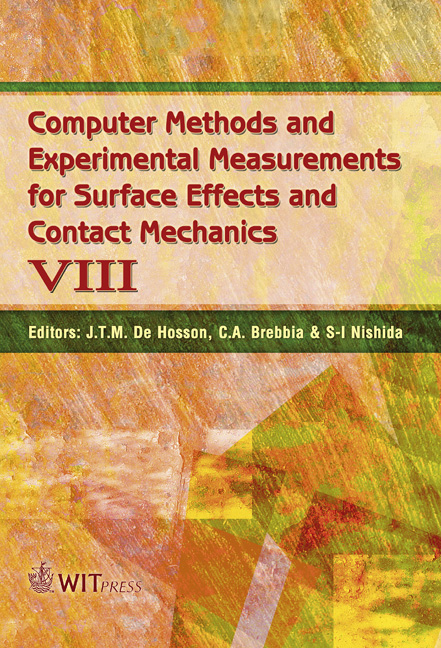Inverse Problems Of Plane Elasticity For The Determination Of Contact Stresses
Price
Free (open access)
Transaction
Volume
55
Pages
10
Published
2007
Size
1,104 kb
Paper DOI
10.2495/SECM070231
Copyright
WIT Press
Author(s)
A. N. Galybin
Abstract
This article presents some results of numerical experiments on the reconstruction of contact stresses by using synthetic data on displacement monitoring on a traction-free surface. The corresponding boundary value problem is ill-posed therefore a regularisation procedure based on the SVD decomposition is employed. Statistical analysis of results has been performed. Keywords: contact problem, plane elasticity, boundary value problems, inverse problems, SVD regularisation. 1 Introduction There are many applications where data on stresses or displacements may not be available on the entire boundary of a body (including internal boundaries). Such problems appear in strain-stress measurements, interferometry, rock mechanics, monitoring the fracture development in strength tests etc. They require the consideration of a specific boundary value problem, BVP, which is overspecified on a part of the boundary and underspecified on the rest of it. The theory of classical BVPs of plane elastostatics is fully presented in the classical monograph by Muskhelishvili [1], it assumes that two scalar boundary conditions are given on the entire boundary of a domain. In contact mechanics the BVPs are usually formulated as the mixed type problems when displacements are given in the contact zone and tractions on the rest of the surface. Other formulations of contact conditions are discussed in detail in Johnson [2]. In all these cases the boundary value problem is well posed, therefore it possesses a unique and stable solution. Despite classical boundary conditions describe a wide class of mechanical phenomena there is still the necessity to use additional assumptions in
Keywords
contact problem, plane elasticity, boundary value problems, inverse problems, SVD regularisation.





